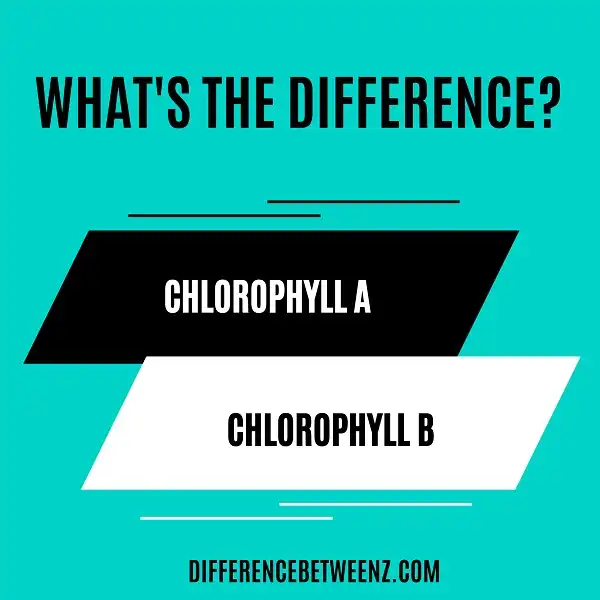There are two primary types of chlorophyll: chlorophyll A and B. Chlorophyll A is more efficient in energy production, while chlorophyll B has better absorption properties. Chlorophylls are found in the leaves of plants and play a critical role in photosynthesis. Understanding the difference between these two types of chlorophyll can help you improve your garden or agricultural practices.
What is Chlorophyll A?
Chlorophyll A is a green pigment that is found in all plants. Chlorophyll A is essential for photosynthesis, the process by which plants convert sunlight into chemical energy. Chlorophyll A absorbs light in the blue and red portions of the visible light spectrum, and this energy is used to drive the chemical reactions of photosynthesis. In addition to Chlorophyll A, plants also contain other pigments, such as carotenoids, which absorb light in the yellow and orange portions of the spectrum. However, Chlorophyll A is the primary pigment responsible for absorbing light and driving photosynthesis. As a result, Chlorophyll A is essential for all plant life on Earth.
What is Chlorophyll B?
Chlorophyll B is a type of chlorophyll that is found in plants. It is similar to chlorophyll A, but it has a different structure and functions differently in plant cells. Chlorophyll B helps plants absorb light at different wavelengths, which helps them convert more light into energy. Chlorophyll B also helps to protect plants from damage by absorbing some of the harmful UV rays from the sun. In addition, chlorophyll B gives plants their green color. However, not all plants contain chlorophyll B. For example, many types of algae do not have this pigment. Chlorophyll B is just one of the many pigments that helps plants to thrive.
Difference between Chlorophyll A and B
Chlorophyll A and B are two types of pigment molecules that are essential for photosynthesis. Chlorophyll A is the primary pigment molecule involved in light absorption, while Chlorophyll B acts as a helper molecule. Chlorophyll B helps to absorb light outside of the Chlorophyll A absorption range and transfer it to Chlorophyll A. Chlorophyll B also helps to protect Chlorophyll A from photo-oxidation, a process in which light damages the Chlorophyll A molecule. Together, Chlorophyll A and Chlorophyll B are essential for plants to convert sunlight into chemical energy.
While Chlorophyll A and B share many similarities, there are also some important differences between them. Chlorophyll A has a higher absorption rate than Chlorophyll B, meaning that it is more efficient at capturing light energy. Chlorophyll B is not as stable as Chlorophyll A and is more susceptible to damage from light exposure.
Conclusion
Chlorophyll is a molecule found in all green plants that play an important role in photosynthesis. There are two main types of chlorophyll, A and B. While both have their benefits, chlorophyll A has been shown to be more beneficial for human health. If you’re looking to add some extra greens to your diet, make sure they contain chlorophyll A!


